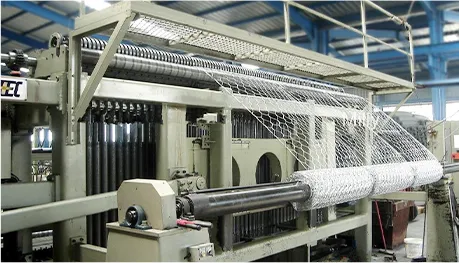-
 Phone:
Phone: -
 Email:
Email:

Hexagonal Wire Mesh Applications and Benefits in Various Industries
The Versatility of Hexagonal Wire Mesh
Hexagonal wire mesh is a versatile and widely used material that finds applications in various industries and settings. Its unique design features hexagonal openings that provide strength, flexibility, and durability, making it an excellent choice for many projects, from construction to agriculture.
Structure and Design
The structure of hexagonal wire mesh consists of wires twisted together to form a series of hexagonal shapes. This configuration allows for the even distribution of weight and pressure, making it strong enough to withstand significant external forces. The mesh is typically made from galvanized steel, stainless steel, or other materials that ensure longevity and resistance to corrosion. Its openness allows for light and air to pass through while still providing a protective barrier, making it ideal for various uses.
Applications in Construction
In the construction industry, hexagonal wire mesh is predominantly used in fencing applications. Its robust construction provides security for residential and commercial properties, as well as agricultural land. It can effectively keep livestock in while also keeping predators out, making it a preferred choice for farmers. Additionally, hexagonal wire mesh is often used in concrete reinforcement. When embedded in concrete, it enhances the structural integrity of walls, floors, and other surfaces, preventing cracks and increasing durability.
Another significant application is in landscaping and erosion control. Hexagonal wire mesh can be used to create retaining walls, silt fences, and other erosion control structures that help manage soil and water effectively. This use is particularly important in preventing landslides and maintaining the integrity of slopes in hilly areas.
hexagonal wire mesh

Role in Agriculture
In agriculture, hexagonal wire mesh serves multiple purposes. It is commonly employed in the creation of animal enclosures, garden fencing, and trellises for climbing plants. Gardeners appreciate its ability to provide support without obstructing sunlight, thereby promoting healthy plant growth. Moreover, it is also used to protect crops from birds and other pests, ensuring that yields are not adversely affected.
The mesh is also beneficial in creating compost bins. Its durability allows for aeration while containing the materials necessary for composting, ultimately aiding in organic waste management.
Environmental Benefits
Hexagonal wire mesh is an eco-friendly choice for many applications. Often made from recyclable materials, its use contributes to sustainable practices. Furthermore, its durability means it does not need to be replaced as frequently as other materials, reducing waste over time. Some manufacturers even offer hexagonal wire mesh coated with environmentally friendly substances to enhance its longevity without harming the ecosystem.
Conclusion
The hexagonal wire mesh is a remarkable material that serves a multitude of purposes across various sectors. Its unique design, strength, and flexibility make it ideal for construction and agriculture, among other applications. With its environmental benefits and versatility, hexagonal wire mesh appears poised to continue its relevance in modern projects, contributing to safety, sustainability, and functionality in numerous areas of daily life. Whether used for fencing, erosion control, or gardening, hexagonal wire mesh proves to be a reliable and efficient solution for various needs. As innovation continues, we can expect to see even more creative applications for this remarkable material.
-
Wire Mesh for Every Need: A Practical SolutionNewsJul.25,2025
-
Steel Fences: Durable, Secure, and Stylish OptionsNewsJul.25,2025
-
Roll Top Fencing: A Smart Solution for Safety and SecurityNewsJul.25,2025
-
Cattle Farm Fencing Solutions for Maximum SecurityNewsJul.25,2025
-
Affordable Iron Binding Wire SolutionsNewsJul.25,2025
-
Affordable Galvanized Wire SolutionsNewsJul.25,2025
-
Wire Hanger Recycling IdeasNewsJul.25,2025








